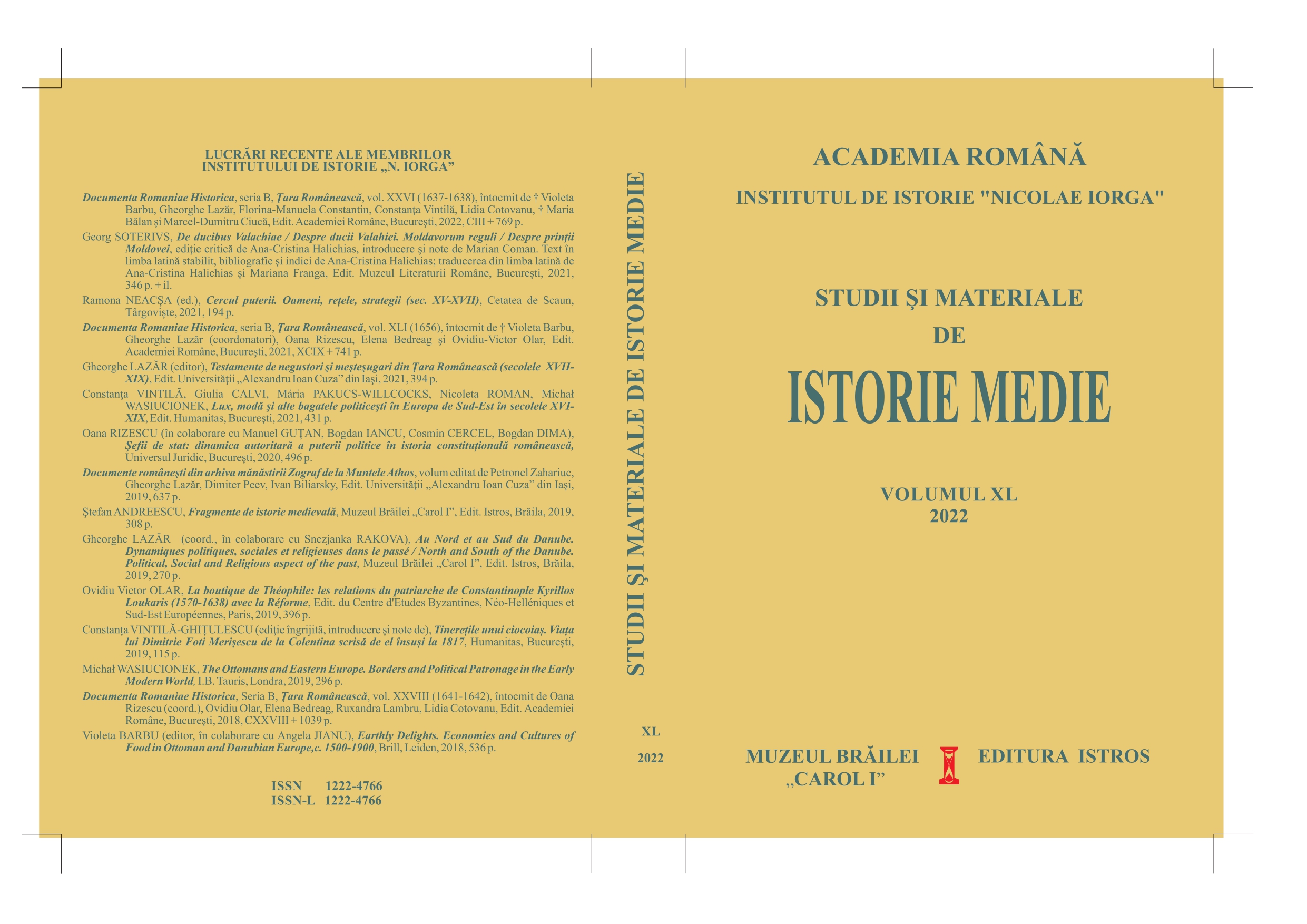De veghe la hotarul țării: schitul Lapoș de pe moșia răzeșilor din Dărmănești (ținutul Bacău, 1734-1860)
On Watch at the Realm's Border: the Lapoș Cloister on the Yeomen’s Estate from Dărmănești (Bacău County, 1734-1860)
Author(s): Mihai MîrzaSubject(s): History, History of Church(es), Local History / Microhistory, 18th Century, 19th Century
Published by: Institutul de Istorie Nicolae Iorga
Keywords: Lapoș cloister; Dărmănești; Bacău; monk Ioil; bishop Ioanichie;
Summary/Abstract: Formerly a cloister of the bishopric of Roman, Lapoș was founded on the yeomen’s estate from Dărmănești, in the Bacău county, by the monk Ioil. A cloister by the same name also existed in the neighbouring Wallachia, in the bishopric of Buzău. Its foundation date is placed in between 1734-1736, when the founder, along with his disciples, built a wooden church dedicated to the Holy Trinity. The cloister’s endowment was gradual, over time, and was especially due to the endeavours of its first two abbots and to the support given by the bishop of Roman, Ioanichie. The latter placed the cloister under the guardianship of the bishopric and was directly involved in the donation of several estates from the villages of Dărmănești, Vermești and Stănești. Most likely, the same bishop interceded on the cloister’s behalf for the charter privileges given by the ruling lords of Moldavia, Matei Ghica and his brother, Scarlat. Throughout the first decades of the 19th century, the cloister prospered and a stone church was built around 1815 due the hieromonk Mihail Erschi’ efforts. Nonetheless, the cloister’s overall status continued to be that of a rather impoverished monastic community. Due to the unsuitable building ground, a shady place with spongy soil, the church started to crumble in a few decades. The dissolution of the cloister occurred in the larger context of the mid-19th century secularization. By that point, the church was damaged, partly burned, its endowment had been lost and its monks scattered. There is an initiative today to revive the former cloister, whose liturgical objects are preserved in a few parish churches from the Trotuș valley.
Journal: Studii şi Materiale de Istorie Medie (SMIM)
- Issue Year: XL/2022
- Issue No: XL
- Page Range: 407-439
- Page Count: 33
- Language: Romanian
- Content File-PDF

